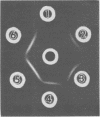Abstract
A hemagglutination inhibition assay was used to estimate the presence of soybean lectin-binding polysaccharide in whole culture, culture supernatant, and isolated exopolysaccharide of Rhizobium japonicum USDA 138. The occurrence of 0.1 to 0.2 μg of lectin-binding polysaccharide could be detected within 2 h with a 0.5-ml total sample. Lectin-binding polysaccharide was detected in all preparations during both exponential and stationary growth phases. The formation of lectin-binding polysaccharide was not, whereas that of total exopolysaccharide was, markedly affected by culture conditions.
Full text
PDF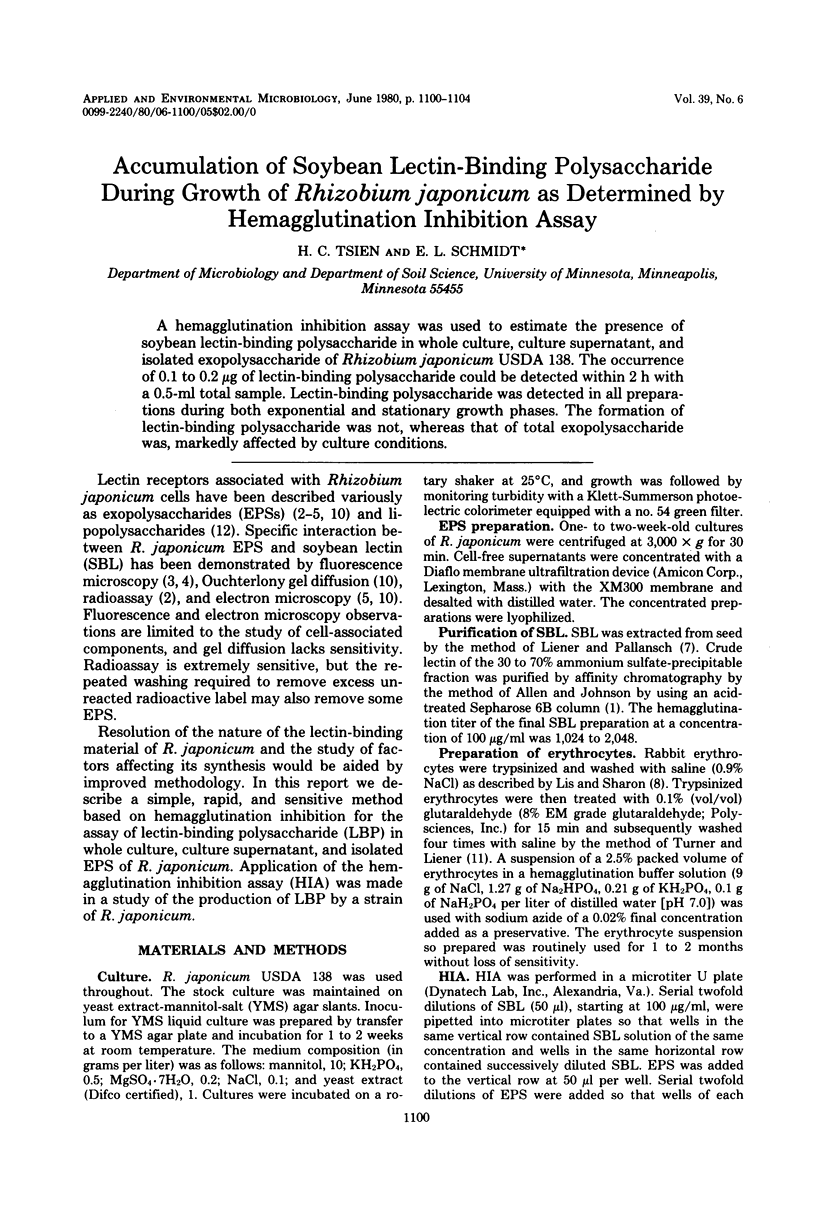
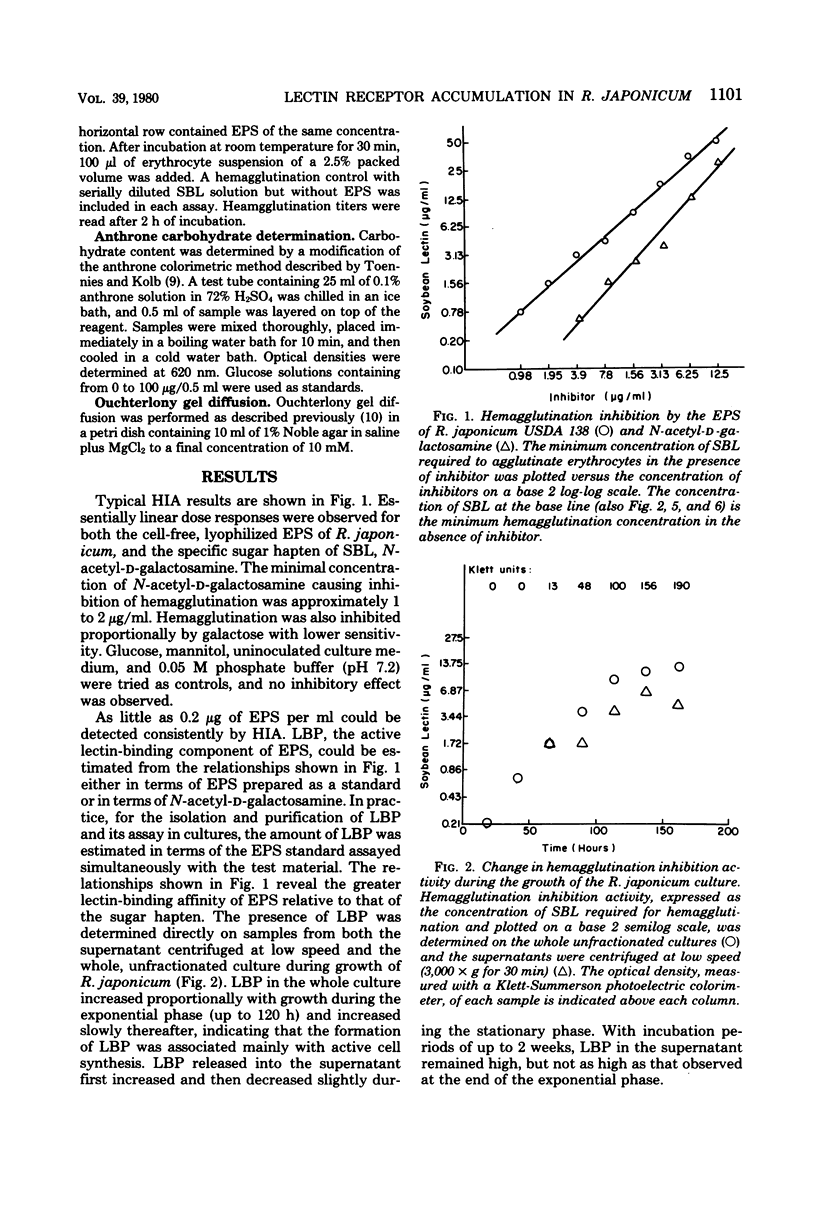
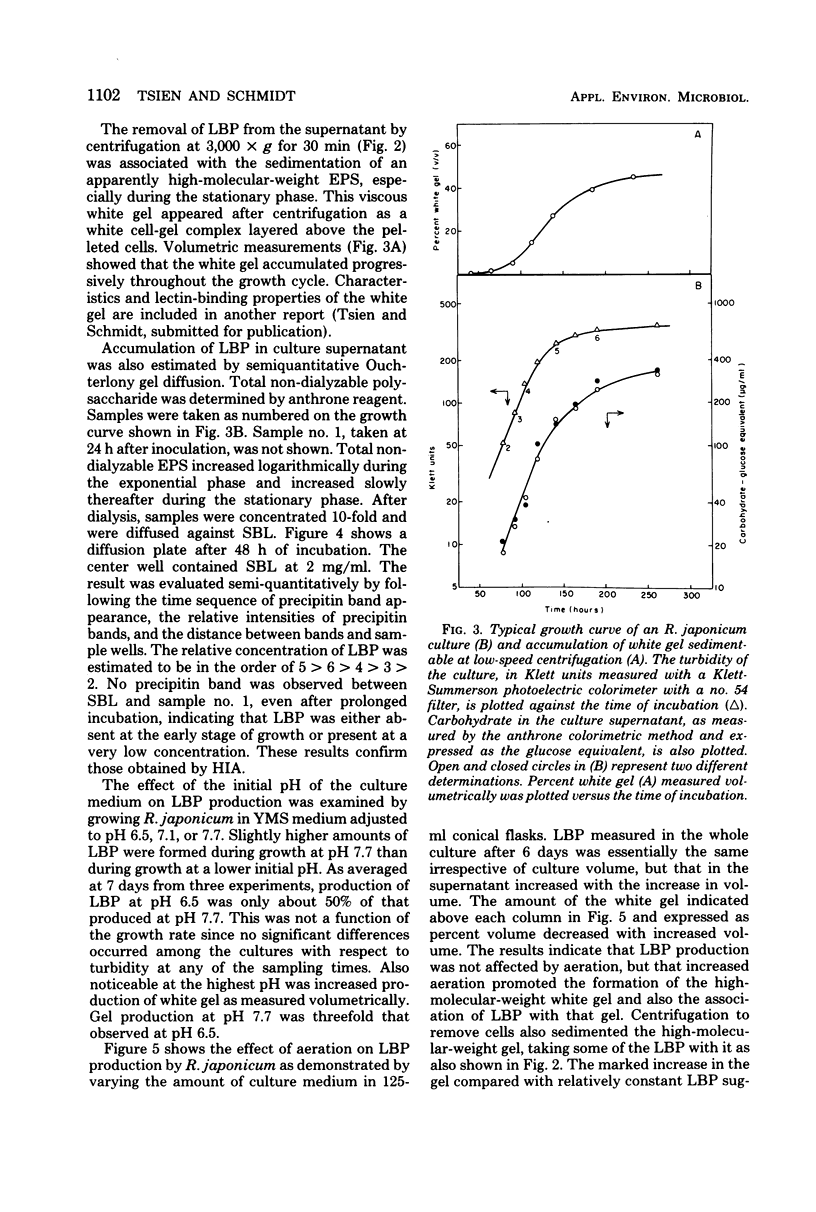
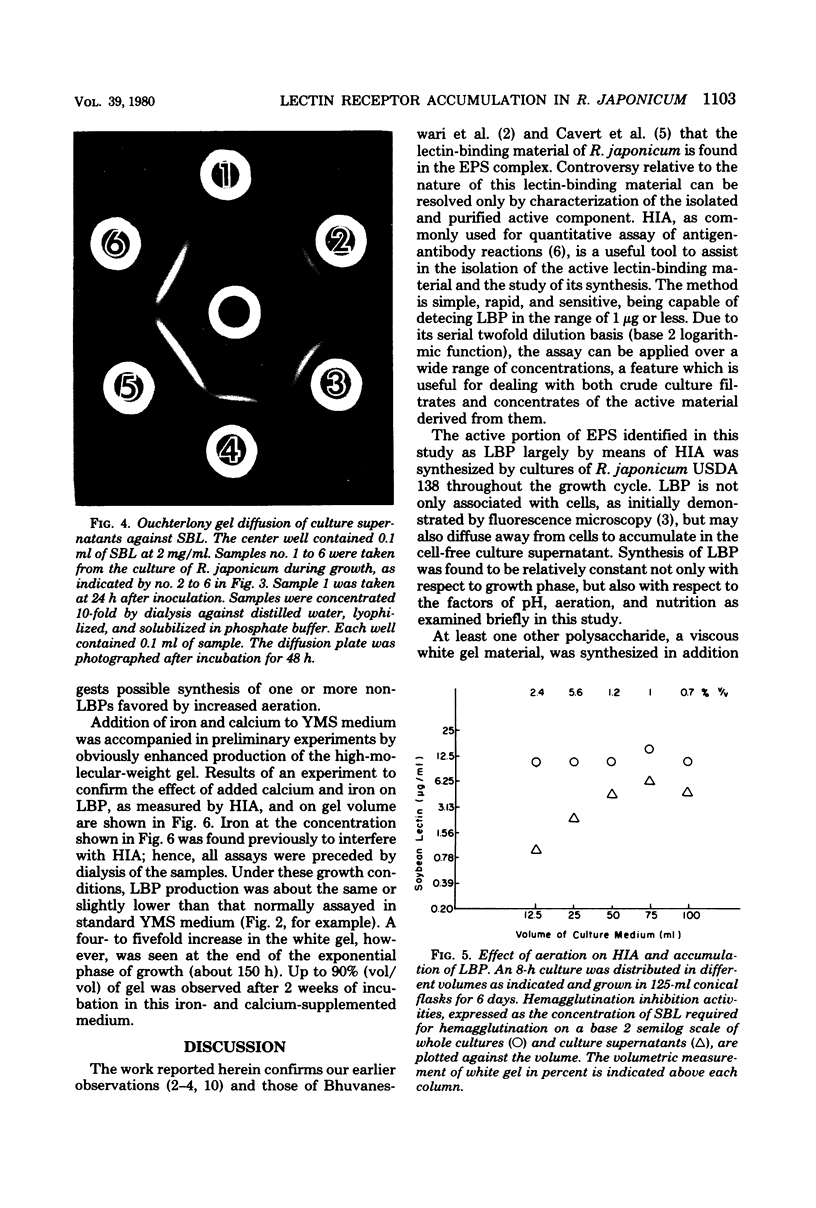
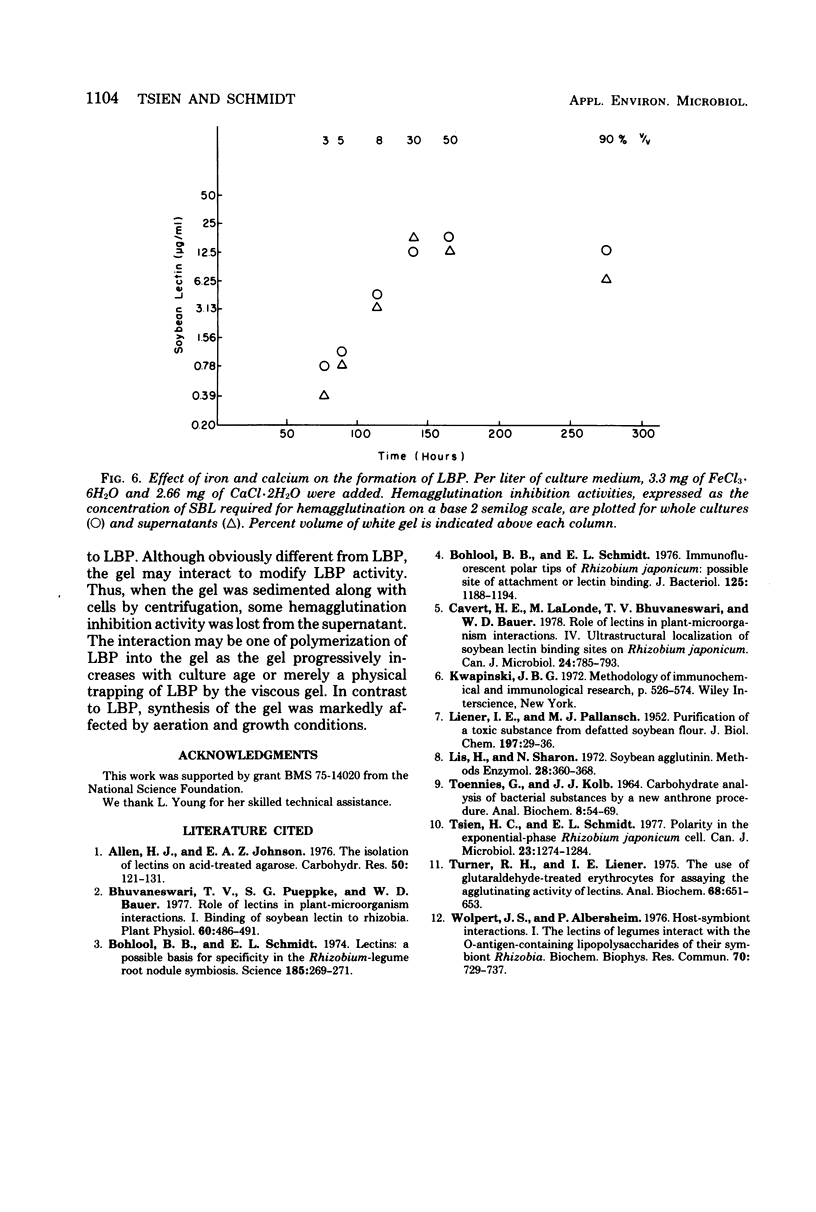
Images in this article
Selected References
These references are in PubMed. This may not be the complete list of references from this article.
- Allen H. J., Johnson E. A. The isolation of lectins on acid-treated agarose. Carbohydr Res. 1976 Aug;50(1):121–131. doi: 10.1016/s0008-6215(00)84089-6. [DOI] [PubMed] [Google Scholar]
- Bhuvaneswari T. V., Pueppke S. G., Bauer W. D. Role of lectins in plant-microorganism interactions: I. Binding of soybean lectin to rhizobia. Plant Physiol. 1977 Oct;60(4):486–491. doi: 10.1104/pp.60.4.486. [DOI] [PMC free article] [PubMed] [Google Scholar]
- Bohlool B. B., Schmidt E. L. Immunofluorescent polar tips of Rhizobium japonicum: possible site of attachment or lectin binding. J Bacteriol. 1976 Mar;125(3):1188–1194. doi: 10.1128/jb.125.3.1188-1194.1976. [DOI] [PMC free article] [PubMed] [Google Scholar]
- Bohlool B. B., Schmidt E. L. Lectins: a possible basis for specificity in the Rhizobium--legume root nodule symbiosis. Science. 1974 Jul 19;185(4147):269–271. doi: 10.1126/science.185.4147.269. [DOI] [PubMed] [Google Scholar]
- Calvert H. E., Lalonde M., Bhuvaneswari T. V., Bauer W. D. Role of lectins in plant--microorganism interactions. IV. Ultrastructural localization of soybean lectin binding sites of Rhizobium japonicum. Can J Microbiol. 1978 Jul;24(7):785–793. doi: 10.1139/m78-132. [DOI] [PubMed] [Google Scholar]
- LIENER I. E., PALLANSCH M. J. Purification of a toxic substance from defatted soy bean flour. J Biol Chem. 1952 May;197(1):29–36. [PubMed] [Google Scholar]
- TOENNIES G., KOLB J. J. CARBOHYDRATE ANALYSIS OF BACTERIAL SUBSTANCES BY A NEW ANTHRONE PROCEDURE. Anal Biochem. 1964 May;8:54–69. doi: 10.1016/0003-2697(64)90168-x. [DOI] [PubMed] [Google Scholar]
- Tsien H. C., Schmidt E. L. Polarity in the exponential-phase Rhizobium japonicum cell. Can J Microbiol. 1977 Sep;23(9):1274–1284. doi: 10.1139/m77-191. [DOI] [PubMed] [Google Scholar]
- Turner R. H., Liener I. E. The use of glutaraldehyde-treated erythrocytes for assaying the agglutinating activity of lectins. Anal Biochem. 1975 Oct;68(2):651–653. doi: 10.1016/0003-2697(75)90663-6. [DOI] [PubMed] [Google Scholar]
- Wolpert J. S., Albersheim P. Host-symbiont interactions. I. The lectins of legumes interact with the o-antigen-containing lipopolysaccharides of their symbiont Rhizobia. Biochem Biophys Res Commun. 1976 Jun 7;70(3):729–737. doi: 10.1016/0006-291x(76)90653-7. [DOI] [PubMed] [Google Scholar]



